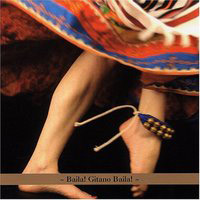 |
 |
 |
 Entertainment | June 2005 Entertainment | June 2005  
Cuban Music: A Whole New Vista
 Phil Sweeney - Belfast Telegraph Phil Sweeney - Belfast Telegraph


| | Cuban music continues to evolve and thrill the world. |
Springtime in Havana, and the mood is up-beat. The US embargo may be squeezing hard, but the Cubans excel at Yankee-defying. Havana's latest landmark is a huge stage facing the US Embassy, its arch draped with a big swastika flanked by pictures of torture victims in Abu Ghraib - for which read Guantanamo Bay.

Castro is on TV every afternoon, quavering on about how new treaties with China and Venezuela will save the economy. "Fidel is very optimistic," says a taxi driver, without any apparent irony.

So is the music business, judging by the Egrem awards taking place in the Karl Marx Theatre. Egrem - Empresa de Grabaciones y Ediciones Musicales - was for years the only state record company. Formed from the nationalised Panart in 1961, it's still the biggest, owning a huge catalogue of classic Latin recordings going back to the Forties.

The Buena Vista Social Club records weren't Egrem, but Egrem cashed in by licensing hundreds of tracks of vintage Compay Segundo et al for the dozens of compilations that jammed the world's store racks in the post-BV boom.

All Havana's tourist hotels still feature cabaret performers claiming relationships with the BV cast, but the licensing boom is over and Egrem must look elsewhere - hence the awards gala, and the London alliance with Havana Holdings, a multifaceted company centred on the Floridita nightspot in Soho.

Andrew McDonald, the Floridita chief executive, is in Havana rushing between meetings and mass auditions where Egrem parades son septets for approval and despatch to London.

So what's big in Cuba now? For one thing, rock, with a new style of hirsute axe-hero. For another, Latin pop. Typical are Buena Fe, a duo of young music graduates from Guantanamo who turn up together on a battered Yamaha. They're big stars, and winners of the pop award.

Buena Fe don't have much of the musical feel of Guantanamo, the rough black son-variant changu, I venture. "Just because we come from Guantanamo doesn't mean we have to sing changu," ripostes Israel Rojas. "Do British pop stars sing regional English folk music?"

Good point. Still, it's a relief that Cuba's favourite dance music is still authentically Havana-born, the blend of Afro-Cuban percussion, jazzy horn and rapid-fire lyrics and choruses known as timba, played by troupes of dancers and musicians such as La Charanga Habanera, the stars of the Egrem show. Founded by a violinist named David Calzado, La Charanga Habanera leapt to notoriety in 1997 when lewd stage antics led to a ban on performing.

Cuban musicians may now have the right to earn money, but they have to watch their behaviour. The state apparatus still controls most aspects of production, from issuing musicians' visas to the release schedules. And, of course, checking cultural imports.

Within this system, Egrem maintains its position by offering good sales prospects via its chain of nightclubs and record shops, although asking Egrem for sales figures is about as fruitful as requesting Fidel's mobile number. What does a hit CD sell? "Don't know, maybe 10,000 copies?" Calzado hazards. But it's clear that, at $15 each - two months' wages to the average Cuban - most sales are to tourists. Only the street stalls selling pirate copies for $2 attract Cuban clients. All commercial releases ultimately focus on the foreign buyer.

Egrem no longer has a monopoly; there are now eight other whole or partly state-run labels. And an unusual newcomer - the band leader Juan de Marcos Gonzalez, architect of the Buena Vista project, has launched what he says is the first Cuban independent label.

Based partly in London, partly in Mexico and partly in cyberspace, (Cubans can't have private companies), the DM Ahora! label dodges the obstacles, running the online side through a Japanese office (Cubans aren't allowed internet accounts), and keeping a wary eye on state restrictions.

Visit Marcos's bungalow/ studio, and a succession of musicians drops by for advice on computers and music-business strategy. Dozens of them, from classical pianists and jazz percussionists to rappers, are on Marcos's books and on his newly released first album Step Forward.

Many young artists who supply Havana's other big new musical craze, reggaeton, are "clandestino", or unofficial. This hybrid style, linked to rap, is today's street music: 90 per cent pirate-produced, it is tentatively penetrating the state apparatus, and even Egrem has a reggaeton act.

So that style is also reaching the lobster and cocktail set at the Floridita in London, where Egrem's reggaeton-rappers Triangulo Oscuro have been attracting attention. That's grounds for celebration for Cuba's huge and talented corps of musicians. | 
 | |
 |



